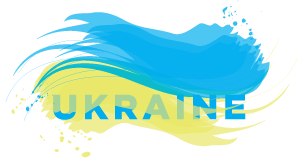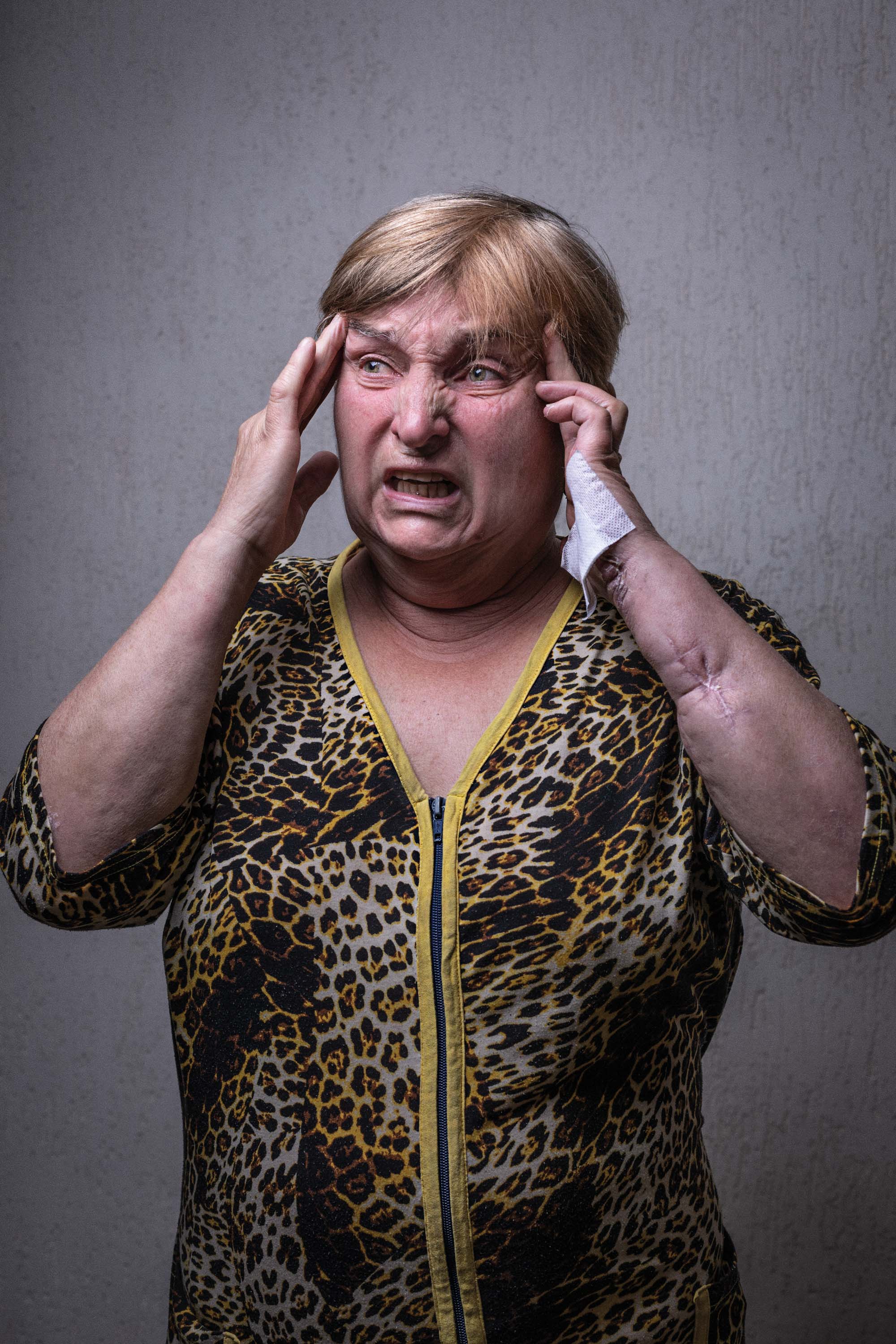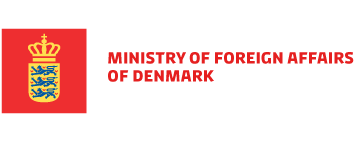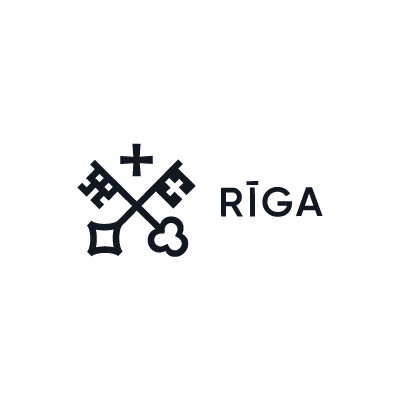Before the war, Tetyana lived in an apartment in Mariupol with her husband. On April 8, they arrived in Latvia. Before her pension, she was an assistant teacher at a school for children with disabilities.
Signs of the war
After Russia annexed Crimea in 2014, signs of a possible war in Odessa had appeared. In 2016, Tetyana had even found an unexploded grenade in the streets, and safety training with the children at school in case of an attack was obligatory. This also meant that they had gotten used to the threat.
The red line
On 25 March, they had flight tickets to go visit their son in Barcelona, and in the beginning of March they still thought that they would be able to travel on that day. It didn’t seem real that the war would continue for such a long time. The red line was crossed on March 24, when Tetyana realized that everyone else had left the neighborhood. That they were some of the only ones left, and that it was really dangerous to stay. Her hand had also started to rot.
Tetyana
Their names were Misha and Alexy. They were 29 and 49 years old.
Misha and Alexy
March 14 was the day when Tetyana got injured. The situation in Mariupol was bad, and they were under siege and constantly being bombarded. There was no heating or electricity which meant they had to cook on a fire outside. The moment when the explosion happened, Tatyana threw herself onto the ground as she had been taught. She lifted her arms to cover her head, only to discover that blood was coming out of her hand like water from a fountain.
One neighbor coming out of a car was hit by shrapnel going through his head. He dropped dead instantly. Another neighbor was pierced through his spine. He didn’t survive either. It all happened in the blink of an eye. “Their names were Misha and Alexy. They were 29 and 49 years old,” Tatyana recalls and moans.
Tetyana
We buried people in the yards.
Tatyana explains how they heard the sound which is very specific for when cluster bombs fall and open up. “It was a cluster bomb. Two of my neighbours died in front of my eyes”. Tatyana pauses with a distant look in her eyes. She takes a deep breath and moans once again. “We buried people in the yards.”
About Brothers & Sisters
A photo exhibition in response to the war in Ukraine
On 24 February 2022 Russia invaded Ukraine. Since then millions of people have fled the war. The conflict is becoming increasingly deadly and as of August 2022, 6,6 million Ukrainians have already left the country. Many more have been internally displaced. Mainly women with children and elderly are leaving Ukraine while men between the ages of 18 and 60 have to stay to defend their country.
The war has consequences well beyond Ukraine and has a negative effect on European and global society at large. Latvia and other countries in the region have opened their borders to receive refugees from the conflict with at present 36,500+ Ukrainians registered in Latvia.
This exhibition tells the stories of some of the people who have made the journey from Ukraine to Europe. The idea is to offer a space for you to meet our fleeing ‘brothers and sisters’ and listen to their experiences. To create opportunities for reflection and positive dialogue. And to inspire feelings of solidarity and empathy.
In times of war and crisis, the human experience is often reduced to numbers and statistics; it is difficult to conceptualise the idea of more than 6 million people fleeing their homes and families.
Brothers & Sisters strives to show each human as an individual person with a name, a face and a story.
selection of stories
Portraits & stories by Martin Thaulow
Translations & Coordination Danish Cultural Institute in Estonia, Latvia and Lithuania
Embassy of Denmark, Latvia
Partner

Backed by
Exhibition locations
Brāļi un māsas
Tetjana
Tā bija kasešu bumba. Divi mani kaimiņi nomira manā acu priekšā.
Pirms kara, Tetjana dzīvoja Mariupoles dzīvoklī kopā ar vīru. 8.aprīlī viņi ieradās Latvijā. Pirms Tetjana aizgāja pensijā, viņa strādāja par skolotāja palīgu skolā bērniem ar īpašām vajadzībām.
Kara priekšnojautas
Pēc Kirmas aneksijas 2014.gadā, iespējamā kara pazīmes parādījās Odesā. Reiz, 2016.gadā, Tetjana pat atrada uz ielas neuzsprāgušu rokas granātu, un viņas skolā drošības apmācības bērniem uzbrukuma gadījumā bija obligātas. Tas nozīmē arī to, ka cilvēki bija pieraduši pie draudiem.
Sarkanā līnija
Uz 25.martu viņiem bija nopirktas biļetes uz Barselonu, lai apciemotu dēlu, un marta sākumā Tetjana ar vīru joprojām domāja, ka varēs doties uz Spāniju. Šķita nereāli, ka karš varētu turpināties tik ilgi. Sarkanā līnija tika novilkta 24.martā, kad Tetjana saprata, ka visi ir pametuši apkārtni. Izrādās viņi bija vieni no retajiem, kas vēl bija palikuši, bet uzturēties pilsētā bija nedroši. Tetjanas rokā sākās gangrēna.
Tetjana
Viņus sauca Miša un Aleksejs. Viņiem bija 29 un 49 gadi.
Miša un Aleksejs
14.martā Tetjana tika ievainota. Situācija Mariupolē bija slikta, pilsēta bija aplenkta un viņi tika nepārtraukti bombardēti. Nebija elektrības un apkures, kas nozīmē, ka ēdiens bija jāgatavo uz ugunskura ārā. Brīdī kad notika eksplozija, Tetjana metās zemē, kā tika mācīta. Viņa piesedza galvu ar rokām, bet tad atklāja, ka no tām līst asinis kā no strūklakas.
Vienu no kaimiņiem, kas tajā brīdī kāpa ārā no mašīnas, nogalināja bumbas fragments, izejot cari galvai. Viņš bija pagalam acu mirklī. Citam kaimiņam fragmenti izgāja cari mugurai. Arī viņš neizdzīvoja. Tas viss notika vienā mirklī. “Viņus sauca Miša un Aleksejs. Viņiem bija 29 un 49 gadi,” Tetjana atceras un noelšas.
Tetjana
Mēs apglabājām cilvēkus pagalmos.
Tetjana stāsta, kā viņi dzirdēja ļoti specifisku skaņu, kā krīt un atveras kasešu bumbas. “Tā bija kasešu bumba. Divi mani kaimiņi nomira manā acu priekšā.” Tetjana iepauzē un skatās tālumā. Viņa ievelk dziļu elpu un vēlreiz noelšas. “Mēs apglabājām cilvēkus pagalmos.”
Par izstādi BRĀĻI UN MĀSAS
Foto izstāde reaģējot uz karu Ukrainā
2022. gada 24.februārī Krievija iebruka Ukrainā. Kopš šīs dienas miljoniem cilvēku ir bēguši no kara. Aizvien vairāk dzīvību tiek zaudētas konflikta rezultātā, un līdz 2022.gada augustam 6,6 miljoni ukraiņu ir pametuši savu valsti. Vēl vairāk ir pārvietojušies valsts iekšienē. Lielākoties sievietes ar bērniem un vecāka gada gājuma cilvēki pamet Ukrainu, kamēr vīrieši vecumā starp 18 un 60 paliek, lai aizstāvētu savu valsti.
Karš atstāj sekas daudz tālāk par Ukrainas robežām un tam ir negatīvas sekas gan uz Eiropas, gan uz visas pasaules sabiedrību. Latvija, tāpat kā daudzas citas valstis, ir atvērusi savas robežas, lai uzņemtu Ukrainas kara bēgļus, un šobrīd Latvijā ir vairāk nekā 36 500 ukraiņu, kas meklē šeit patvērumu.
Izstāde atklāj to dažu cilvēku stāstus, kuri ir mērojuši ceļu no Ukrainas uz Eiropu. Mūsu ideja ir piedāvāt telpu, kurā var satikt mūsu bēgošos “brāļus un māsas” un sadzirdēt viņu pieredzes. Radīt iespēju pārdomām un pozitīvam dialogam. Kā arī iedvesmot solidaritātes un empātijas jūtas.
Kara un krīzes laikos cilvēku pieredzes bieži vien tiek pārvērstas skaitļos un statistikās. Ir ārkārtīgi sarežģīti aptvert domu, ka vairāk nekā 6 miljoni cilvēku bēg prom no savām mājām un pamet ģimenes.“Brāļi un māsas” cenšas parādīt katru cilvēku kā individuālu personību ar vārdu, seju un savu stāstu.
Portretu un stāstu autors Martin Thaulow
Tulkojums Dānijas Kultūras institūts un Dānijas vēstniecība Latvijā
Sadarbības partneris

